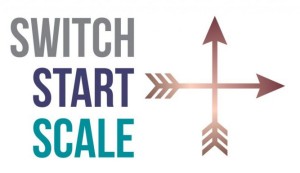Turning a side project into a full-fledged business is an optimistic dream that’s viable with passion and determination.
You might work a full-time job but you’re looking for a creative outlet, especially in isolation. Maybe your circumstances have changed and you want to take ownership of your career or make more money. You could have a burning passion or a lightbulb answer to a problem, or you could simply want to make a difference and contribute to something that matters.
What’s your big Why?
No matter which category you fall into, it’s important to start by exploring your ‘Why.’ Are people asking you for help? Do you feel there’s a better home for your skills and capabilities? Do you want more autonomy, money or career satisfaction? Have you had an inkling for years about ‘going out on your own’ and now you can no longer ignore it?
With clarity on what’s driving you and what the ideal situation is for your side hustle you could earn some extra money, to compliment your part-time job or to swap out your main employment.
Types of side hustles
When it comes to side hustle ideas, the list is endless. You can drive for Uber, perform music, make and sell candles on Etsy, outsource your skills as a service, make food and drinks to sell at a local market or freelance.
Side hustles usually come to life in the form of a product or service. For definition sake, it’s any type of employment undertaken in addition to one’s full time job. Side hustles are generally freelance or piecework in nature and often passion driven.
You can distinguish a side hustle from an expensive hobby by the making a decision to operate in a business-like manner.
It’s critical to validate your idea first and ensure that it has a Unique Selling Point (USP), in comparison to competitors. This is where having access to a local entrepreneurial ecosystem helps, so you can take an idea or concept and test through your network. These ecosystems are also advantageous to leverage coaches, investors, webinars and workshops, and other educational opportunities.
When passion is driving a side hustle, it can easily takeover your life. Focus on developing a Minimal Viable Product (MVP) and just get it out to source real-world feedback for future iterations. Forget about perfectionism - 80% is good enough.
Setting up your side hustle… and sustaining it
To bring your side hustle to life in Australia, you’ll need:
- An ABN
- A budget (forecast whether it’s viable or not and includes all the expenses)
- A business name and location (don’t get too stuck on the naming)
- A point of difference (be clear about your USP)
- Customers (think global)
- Products or services
- Resources (money, time, energy and commitment)
Check factors like conflict of interest with your day job, food hygiene regulations if relevant (i.e. for making goods at home), insurance, Intellectual Property and legal requirements, Work Health and Safety (WHS), tax implications and business structure.
To make your side hustle sustainable, consider who can keep you accountable (a mentor or coach). Look into affiliates and partnerships, so you have people advocating for your business to help earn more profit.
Keep in mind, you have other priorities in your life, which is why automation and outsourcing are key to longevity, especially for side hustles. Technology, virtual assistants and contractors can help move things along, without having to hire employees (yet).
Bigger isn’t always better
There’s something satisfying and empowering about a lean operation. You might be surprised to learn, a $100,000 business with no employees can be more profitable than a million-dollar operation with dozens of employees, huge overheads and debt. You need to think in terms of profit, rather than size. Don’t be disillusioned by big. Keep it lean, have a niche point, and adopt the 80/20% rule – where 80% of your time is income-producing.
If you’re bringing in a wage through an employer and operating your side hustle, speak with an accountant about what percentage you need to put aside for tax time. The goal is to lower your tax bill, based on the expenses you can claim. Track your data (income, profit and expenses) and carry the lean mindset with you as much as possible. And remember, you’re constantly learning and adapting the creations you share with the world. As an entrepreneur, don’t get paralysed by perfectionism.
If you’ve been sitting on an idea for a side hustle, you’re already working on one or you’d like more advice on your business, then book a free one-on-one coaching and mentoring session with the Australian Government funded Entrepreneurship Facilitator Service.

